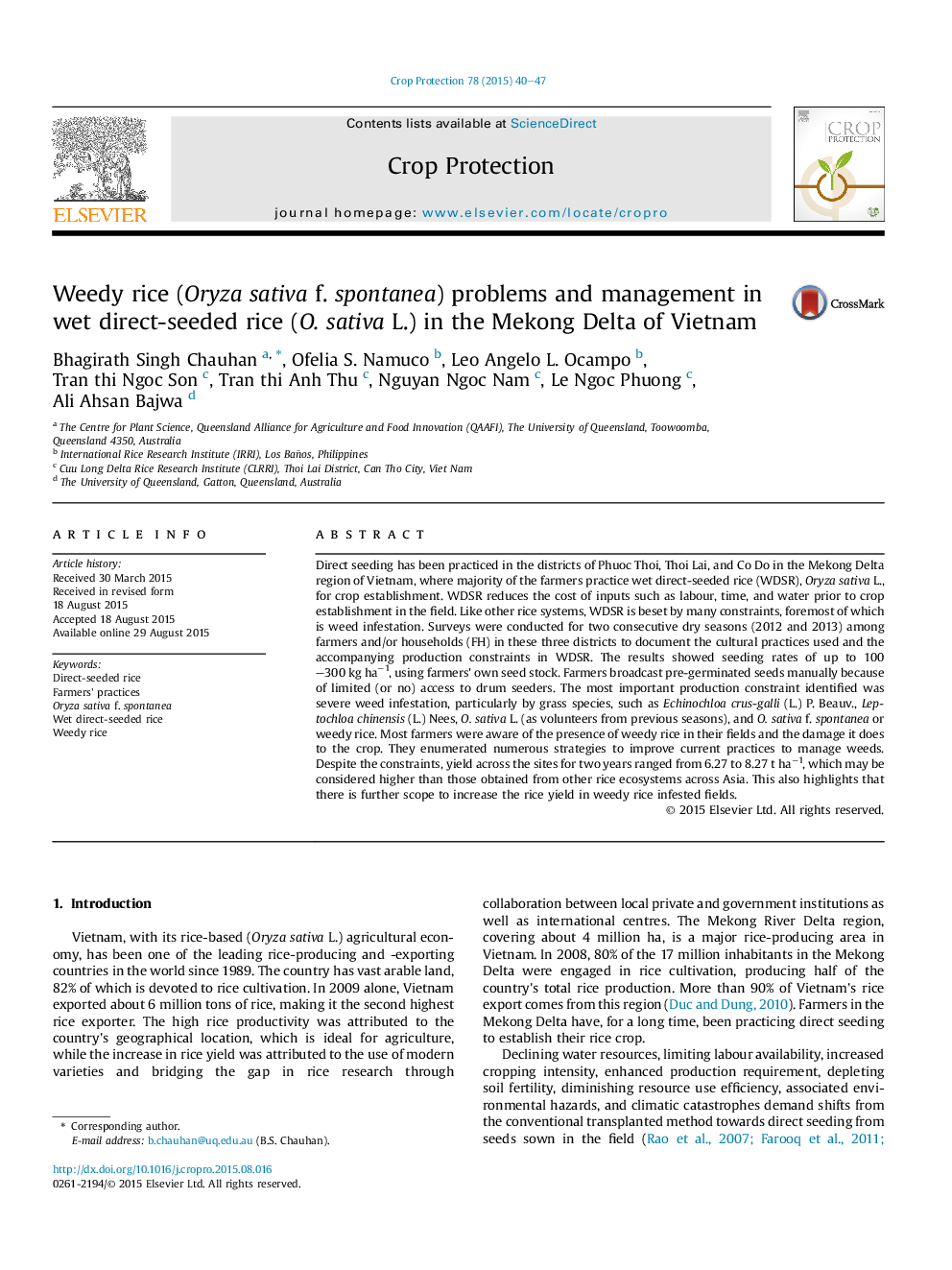| کد مقاله | کد نشریه | سال انتشار | مقاله انگلیسی | نسخه تمام متن |
|---|---|---|---|---|
| 4505666 | 1624309 | 2015 | 8 صفحه PDF | دانلود رایگان |

• Surveys were conducted in 3 districts of Vietnam to document cultural practices.
• Wet direct-seeded rice is the most used establishment method.
• Weeds and weedy rice were the most important production constraint.
• Most farmers were aware of the presence of weedy rice in their fields.
• The results highlight further scope to increase rice yield in weedy rice infested fields.
Direct seeding has been practiced in the districts of Phuoc Thoi, Thoi Lai, and Co Do in the Mekong Delta region of Vietnam, where majority of the farmers practice wet direct-seeded rice (WDSR), Oryza sativa L., for crop establishment. WDSR reduces the cost of inputs such as labour, time, and water prior to crop establishment in the field. Like other rice systems, WDSR is beset by many constraints, foremost of which is weed infestation. Surveys were conducted for two consecutive dry seasons (2012 and 2013) among farmers and/or households (FH) in these three districts to document the cultural practices used and the accompanying production constraints in WDSR. The results showed seeding rates of up to 100–300 kg ha−1, using farmers' own seed stock. Farmers broadcast pre-germinated seeds manually because of limited (or no) access to drum seeders. The most important production constraint identified was severe weed infestation, particularly by grass species, such as Echinochloa crus-galli (L.) P. Beauv., Leptochloa chinensis (L.) Nees, O. sativa L. (as volunteers from previous seasons), and O. sativa f. spontanea or weedy rice. Most farmers were aware of the presence of weedy rice in their fields and the damage it does to the crop. They enumerated numerous strategies to improve current practices to manage weeds. Despite the constraints, yield across the sites for two years ranged from 6.27 to 8.27 t ha−1, which may be considered higher than those obtained from other rice ecosystems across Asia. This also highlights that there is further scope to increase the rice yield in weedy rice infested fields.
Journal: Crop Protection - Volume 78, December 2015, Pages 40–47